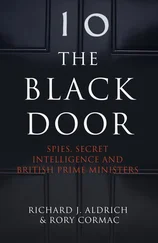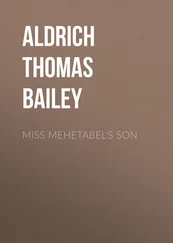In America, the new NSA was now responsible for communications intelligence or ‘comint’, the most important area of signals collection and code-breaking. However, battles over elint stretched on into the 1960s. Even ten years after the creation of NSA, American officials envied the more centralised British model, which placed GCHQ in charge of both fields of sigint activity. 55 In 1953 the British approached the Americans to suggest a combined organisation for planning electronic warfare and radio countermeasures. The problem for the Americans was that they would first have to settle their bitter inter-service disputes, which was proving near impossible. 56 Notwithstanding this, the two nations managed to get together for a major US/UK Electronic Warfare Conference every two years. 57 The GCHQ approach made sense, because it was becoming harder to distinguish between signals that carried communications and other types of electronic signals. The Americans noted wistfully that this ‘has been recognised by the British, who have placed all electronic search and reconnaissance under the control of COMINT authorities’ – in other words, under GCHQ. In the US, control over these matters remained fiercely contested as late as the Vietnam War. 58
By 1953, elint was considered so valuable that more aggressive British operations were being authorised. These included clandestine operations on the ground. GCHQ had manufactured a new short-range elint reception and analysis kit, code-named ‘Deaf Aid’, that looked like a suitcase. SIS was sending agents into the Eastern Bloc with these sets – the results are still classified. The Joint Intelligence Committee decided that the equipment would also be secretly deployed in diplomatic posts inside the Eastern Bloc alongside the covert comint stations operated by the Diplomatic Wireless Service. 59 By February 1954 experimental versions were also being deployed on the ground by the British Military Mission, or ‘Brixmis’, effectively a team of roving military attachés in East Germany. 60 GCHQ was settled into its new accommodation by January 1954, allowing it to work with the Ministry of Defence’s Directorate of Scientific Intelligence on the much-needed expansion of T Division, the analytical unit at Cheltenham which made sense of elint once it was collected. 61
All these new intelligence activities meant risk. In October 1952 A.V. Alexander, the Defence Secretary, and Anthony Eden, the Foreign Secretary, had been chewing over the delicate question of who should approve the expanding programme of ‘ferret’ flights and perilous submarine missions around the edge of the Soviet Union. They agreed that the buck should be passed upwards to Downing Street, and a process developed whereby a list of proposed secret sigint missions was regularly sent to Prime Minister Winston Churchill. Rather disingenuously, Alexander told Churchill that Britain had in the past, in cooperation with the Americans, ‘carried out one or two flights with special aircraft near Soviet territory with the intention of “sniffing” at Russian transmissions’. In reality, a veritable fleet of elint aircraft had been buzzing around the perimeter of the Soviet Union for more than five years. Churchill was assured that they kept at least thirty miles from the Soviet coastline. Alexander continued:
The aircraft are almost certain to be picked up by Russian radar. In fact we shall be disappointed if they are not, for that is the whole object of the operations. But since the flights will take place at the darkest period of the month, and the Russians do not (as far as we know) possess airborne radar, the risks of actual interception are small.
In other words, if the intelligence operations against Soviet air defences were to succeed, they had to actually create alerts and prompt the Soviets to launch their fighters, as it was precisely these procedures that GCHQ wanted to listen in to. Alexander added that a key purpose in undertaking these operations was ‘making our own contribution to the Anglo–American intelligence pool from which we will expect valuable returns in kind’. 62 What would happen if a secret British spy plane crashed inside the Soviet Union, or if a submarine was caught inside a Soviet harbour? So far the GCHQ’s clandestine collection programmes had been remarkably free of incidents, but this enviable record was not to last for much longer. 63
7 The Voyages of HMS Turpin
Depth charging continued for longer than I care to remember…
Tony Beasley, HMS Turpin, off the Soviet coast,
March 1955 1
By early 1953 the Americans had lost a submarine and an aircraft during perilous short-range sigint missions. Their human losses were already in double figures. By contrast, the British were increasingly confident, having flown many missions without incident. The lumbering RB-29 Washington aircraft of the RAF’s 192 Squadron regularly flew their routes around the Baltic, and were often ‘intercepted’ by Soviet fighters, but were never fired upon. This may have been because the British used a small number of experienced and specialised units for forward sigint collection who were dedicated to covert missions, working under the direction of GCHQ. Equally it could have been sheer good luck. However, in 1953 that luck was to change.
The first serious British ‘flap’ was the loss of an RAF Avro Lincoln on 12 March 1953. The Lincoln was effectively an improved version of the Lancaster bomber that had entered service just as the Second World War ended. It saw active service against insurgents in Malaya and Kenya during the 1950s, and although it remained Britain’s heavy bomber until the arrival of the first V-bombers in 1955, a number were transferred to intelligence duties. Some were allocated to 199 Squadron, the radio warfare unit that operated out of RAF Watton. Armed with a powerful carcinotron, they were capable of a formidable barrage of jamming, and were often called on to disrupt the sigint-gathering activities of Soviet spy trawlers around the coast of Britain. 2 The RAF also boasted a Radar Reconnaissance Flight of Lincolns that took ‘radar pictures’ of important landmarks denoting routes to key bombing targets. Some of the more precarious Anglo–American overflights of the Soviet Union during 1952 and 1954 were effectively engaged in an intelligence-mapping exercise for bombing missions that might be directed against Moscow and Kiev. 3
The RAF Lincoln lost on 12 March 1953 was not directly involved in radio warfare or special duties. It was merely on exercise, and wandered out of one of the defined twenty-mile air corridors over the Soviet Zone between West Germany and Berlin. However, as we have seen, British and American exercises were often designed to trigger an alert so that Soviet air-defence systems could be listened in on. The frequent efforts to get their defences to ‘light up’ ensured that the Soviets were often on high alert, and were inclined to fire at anything that came into their territory. Accordingly, all RAF flying near the Soviet Zone of Germany involved an element of risk. This was underlined by a Polish pilot who chose to defect to the West on 5 March 1953, and landed his Soviet-built MiG-15 jet fighter in Denmark. He confirmed that MiG pilots were ‘under orders to shoot down an aircraft if it refuses to obey signals to land, even if it does not open fire’. 4
On the morning of 12 March 1953, two Lincolns took off from the Central Gunnery School at Leconfield in Yorkshire. This was a routine training flight that involved an exercise with NATO partners and took place every fortnight, heading out over Germany on a simulated mission of about six hours. The first aircraft, ‘H’ (RF503), was under the command of Flight Sergeant Denham, and carried the Director of the Gunnery School, Squadron Leader Frank Doran. En route to Germany, as part of the exercise, Denham’s aircraft was ‘intercepted’ by Thunderjets of the Dutch Air Force, Belgian Meteors and RAF Vampires. Unusually, as they approached Kassel, still well inside the British Zone, they were surprised to see two Soviet MiG-15s underneath them. The MiGs conducted a number of mock attacks, but did not open fire. Their activity was recorded on the cine cameras that were attached to the gun turrets of the Lincoln for training purposes. The anxious crew turned north and then headed back to their base in Yorkshire.
Читать дальше












